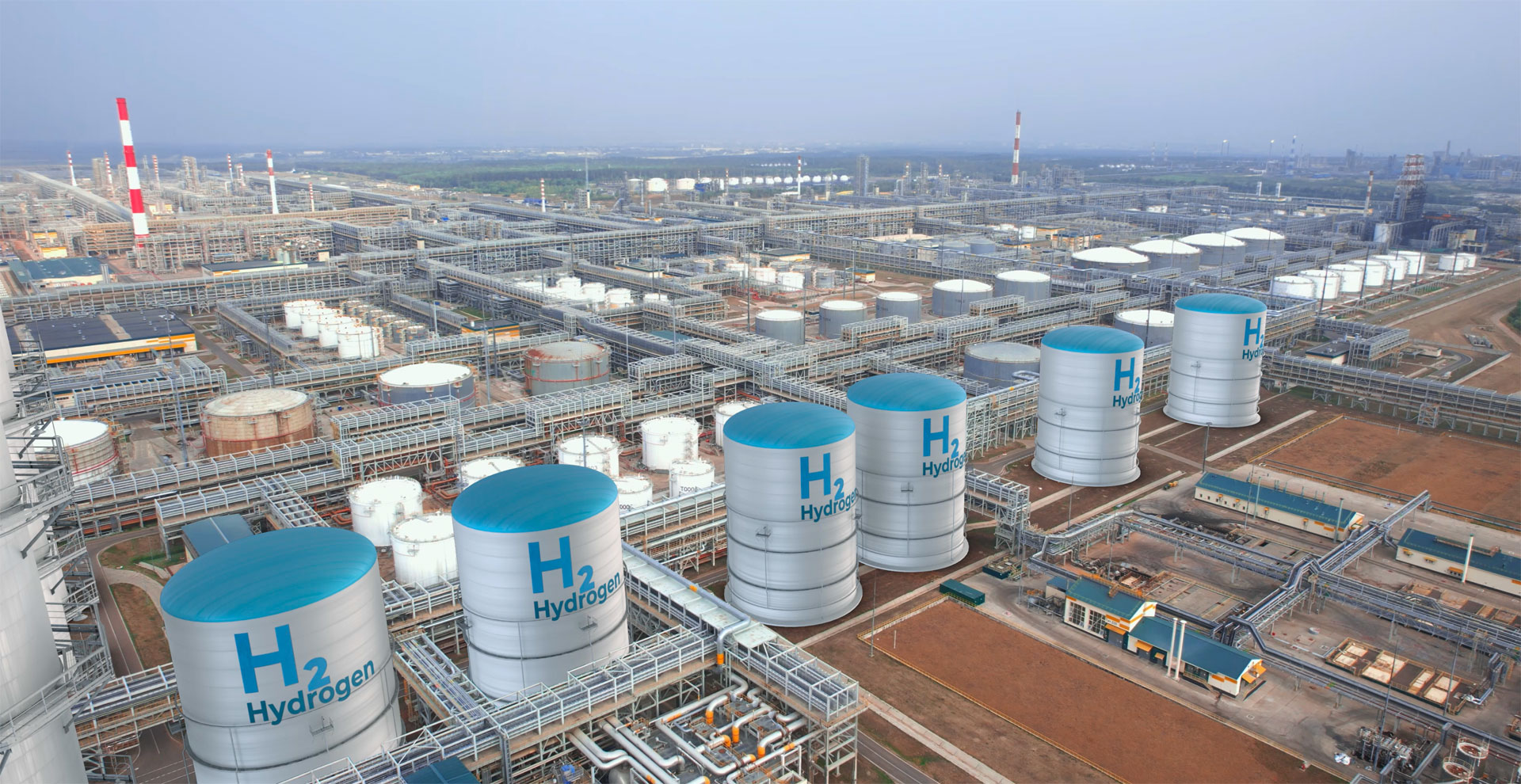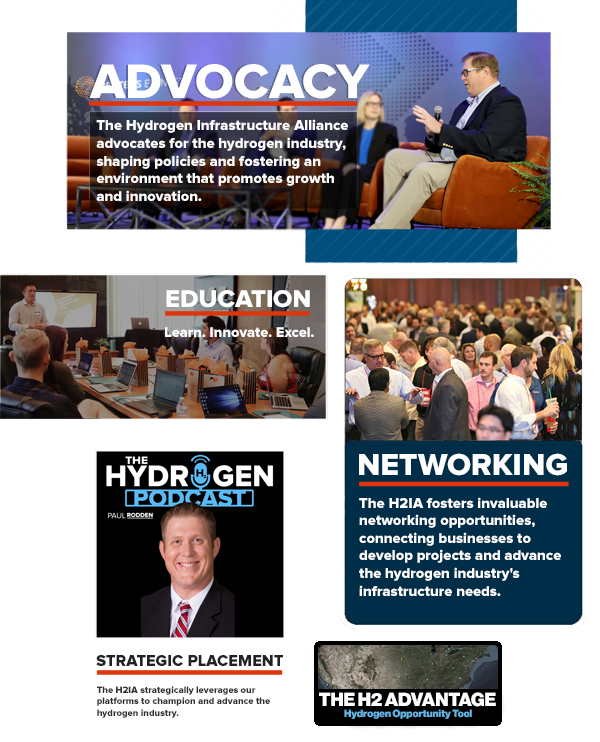In the rapidly evolving landscape of clean energy, hydrogen has emerged as a versatile and promising energy carrier. As the world seeks to decarbonize various sectors, understanding the methods of hydrogen production becomes crucial. Among these methods, steam methane reforming (SMR) stands out as the most widely used industrial process for hydrogen production today.
The Hydrogen Infrastructure Alliance recognizes the significance of SMR in the current hydrogen economy and its potential role in the transition to cleaner energy systems. This article aims to provide a comprehensive explanation of steam methane reforming, its processes, applications, and implications for the future of hydrogen production.
The Basics of Steam Methane Reforming
A. Chemical Reactions Involved
Steam methane reforming is a multi-step process that converts methane (CH₄) and water (H₂O) into hydrogen (H₂) and carbon dioxide (CO₂). The primary reactions can be summarized as follows:
- CH₄ + H₂O ⇌ CO + 3H₂ (Endothermic reforming reaction)
- CO + H₂O ⇌ CO₂ + H₂ (Exothermic water-gas shift reaction)
The overall reaction can be expressed as:
CH₄ + 2H₂O → CO₂ + 4H₂
B. Process Overview
The SMR process typically occurs at high temperatures (700-1000°C) and moderate pressures (3-25 bar). It requires a catalyst, usually nickel-based, to facilitate the reactions. The process is endothermic overall, meaning it requires a significant input of heat energy.
C. Key Components of an SMR Plant
A typical SMR plant consists of several key components:
- Feedstock preparation unit
- Steam reformer
- Shift reactors
- Purification system
- Heat recovery systems
The Steam Methane Reforming Process in Detail
A. Feedstock Preparation
Before entering the reformer, the natural gas feedstock undergoes pretreatment:
- Desulfurization to remove sulfur compounds that can poison the catalyst
- Pre-reforming of heavier hydrocarbons (if present) into methane and syngas
B. Steam Reforming Reaction
The pretreated methane and steam are fed into the primary reformer, where they react over a nickel-based catalyst at high temperatures. This endothermic reaction produces a mixture of hydrogen and carbon monoxide, known as syngas.
C. Water-Gas Shift Reaction
The syngas then enters shift reactors, where the water-gas shift reaction occurs. This step converts most of the carbon monoxide to carbon dioxide while producing additional hydrogen.
D. Purification and Separation
The final step involves purifying the hydrogen product:
- Pressure Swing Adsorption (PSA) is commonly used to achieve high-purity hydrogen (99.9%+)
- CO₂ and other impurities are removed and can be captured for storage or utilization
Technology and Equipment
A. Reformer Designs
Several reformer designs are used in SMR plants:
- Tubular reformers: Most common, with catalyst-filled tubes in a furnace
- Autothermal reformers: Combine partial oxidation with steam reforming
- Compact reformers: For smaller-scale applications
B. Catalysts Used in SMR
Nickel-based catalysts are predominant due to their:
- High activity
- Relatively low cost
- Good stability under SMR conditions
Ongoing research focuses on improving catalyst performance and longevity.
C. Heat Recovery Systems
Efficient heat recovery is crucial for overall plant efficiency:
- Waste heat boilers generate steam for the process
- Preheating of feedstock and combustion air
- Integration with other plant processes for optimal energy use
Efficiency and Energy Considerations
A. Thermal Efficiency of SMR
Modern SMR plants can achieve thermal efficiencies of 70-85%, depending on the configuration and heat integration. The theoretical maximum efficiency is limited by thermodynamics and is around 89%.
B. Energy Requirements
SMR is energy-intensive, requiring about 165-175 MJ of energy input per kg of hydrogen produced. The energy typically comes from burning part of the natural gas feedstock.
C. Comparison with Other Hydrogen Production Methods
SMR is currently more energy-efficient and cost-effective than electrolysis for large-scale hydrogen production. However, as renewable electricity costs decrease, this gap is narrowing, especially when considering the carbon footprint.
Environmental Impact and Emissions
A. Carbon Dioxide Emissions
SMR produces significant CO₂ emissions:
- Direct emissions from the reforming process
- Indirect emissions from energy used to heat the reformer
On average, SMR emits 9-12 kg CO₂ per kg H₂ produced.
B. Methane Slip
Small amounts of methane can escape during the process, contributing to greenhouse gas emissions. Modern plants employ various techniques to minimize methane slip.
C. Potential for Carbon Capture and Storage (CCS)
Integrating CCS with SMR can significantly reduce its carbon footprint, leading to the production of blue hydrogen. CCS technologies can potentially capture up to 90% of CO₂ emissions from SMR plants.
Economic Aspects of Steam Methane Reforming
A. Capital and Operating Costs
SMR plants require significant upfront investment but benefit from economies of scale. Operating costs are dominated by natural gas prices, which can account for 45-75% of the total production cost.
B. Factors Affecting Hydrogen Production Costs
Key factors include:
- Natural gas prices
- Plant scale
- Capacity utilization
- Carbon pricing (where applicable)
C. Market Competitiveness
SMR remains the most cost-competitive method for large-scale hydrogen production, with costs ranging from $1-3 per kg H₂ in most regions.
Applications of Hydrogen from SMR
A. Industrial Uses
Hydrogen from SMR is widely used in:
- Ammonia production
- Oil refining
- Methanol synthesis
- Metal processing
B. Energy Sector Applications
Emerging applications include:
- Power generation (hydrogen turbines)
- Energy storage and grid balancing
C. Transportation Fuel
Hydrogen is increasingly used in fuel cell vehicles, with hydrogen and natural gas blending also being explored for existing natural gas infrastructure.
Innovations and Future Developments
A. Improving Efficiency and Reducing Emissions
Ongoing research focuses on:
- Advanced catalysts for higher conversion rates
- Novel reactor designs for better heat management
- Process intensification techniques
B. Integration with Renewable Energy
Concepts like dynamic SMR, which can respond to variable renewable energy input, are being developed to enhance the sustainability of the process.
C. Small-Scale and Distributed SMR Systems
Compact SMR units are being developed for on-site hydrogen production, reducing transportation costs and infrastructure needs.
Challenges and Limitations
A. Dependence on Natural Gas
SMR’s reliance on natural gas makes it vulnerable to price volatility and supply disruptions.
B. Carbon Footprint Concerns
The high CO₂ emissions from SMR are a significant challenge in the context of climate change mitigation efforts.
C. Competition from Alternative Technologies
Emerging technologies like electrolysis powered by renewable energy are increasingly challenging SMR’s dominance, especially for green hydrogen production.
Steam Methane Reforming in the Context of the Hydrogen Economy
A. Role in the Transition to Clean Hydrogen
SMR is expected to play a crucial role in the near to medium term as a cost-effective method to meet growing hydrogen demand.
B. Potential for Blue Hydrogen Production
Combining SMR with CCS offers a pathway to produce low-carbon hydrogen at scale, potentially bridging the gap to a green hydrogen future.
C. Policy and Regulatory Considerations
Governments worldwide are developing policies to:
- Incentivize cleaner hydrogen production
- Implement carbon pricing mechanisms
- Support the development of CCS infrastructure
Steam methane reforming has been the backbone of industrial hydrogen production for decades, and its importance continues in the emerging hydrogen economy. While it offers a cost-effective and well-established method for large-scale hydrogen production, the process faces challenges related to its carbon footprint and dependence on fossil fuels.
As the world transitions towards cleaner energy systems, SMR is likely to evolve. Innovations in efficiency, integration with carbon capture technologies, and the development of smaller-scale systems will shape its future. The production of blue hydrogen through SMR with CCS represents a significant opportunity to reduce emissions while meeting growing hydrogen demand.
The Hydrogen Infrastructure Alliance recognizes the critical role of SMR in the current hydrogen landscape and its potential to contribute to a low-carbon future. As we progress towards a more sustainable energy system, understanding and optimizing steam methane reforming will remain crucial for stakeholders across the hydrogen value chain.
By continuing to innovate and address environmental concerns, steam methane reforming can serve as a bridge technology, supporting the growth of the hydrogen economy while cleaner production methods mature and scale up. The future of hydrogen production will likely involve a mix of technologies, with SMR playing a significant role alongside emerging green hydrogen production methods.



